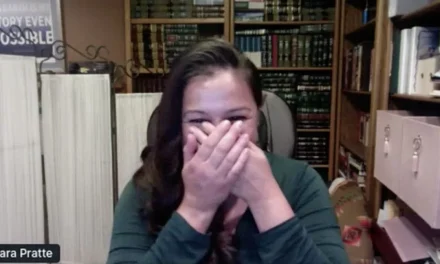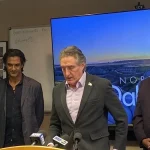The “Native Business Top 50 Entrepreneurs” list serves to elevate awareness of the innovation, professionalism, competence and tenacity demonstrated by Native entrepreneurs across Indian Country. Native Business is rolling out profiles of these 50 Native entrepreneurs online, in no particular hierarchy, to document and memorialize their innovation and self-determination. The inaugural class of the Native Business Top 50 Entrepreneurs recognizes leaders across 13 business sectors, demonstrating the diversity of industries where Natives are making an impact. Among the entrepreneurs recognized in our Graphic Design & Media sector are Sterlin Harjo and Jeremy Charles of FireThief Productions.
In 2014, Sterlin Harjo and Jeremy Charles ran into each other in the parking lot behind Tulsa’s Circle Cinema.
Harjo, Creek, is arguably the most accomplished contemporary Native filmmaker, having directed the feature-length dramas Barking Water, Four Sheets to the Wind and Mekko. Charles, Cherokee, has been Tulsa’s premiere photographer and art director for over a decade, working with clients that include the Oklahoma City Thunder and the Philbrook Museum.
They knew each other, but not well. It was a mutual-friends kind of acquaintance. Charles asked Harjo what he was up to. “Just trying to make some money in Oklahoma somehow,” Harjo replied.
“I bet I can help out with that,” Charles said. Charles was well established and well connected in Oklahoma, but was itching to change direction. “I want to do video,” he told Harjo. “I’m tired of still photography. What if we start something?”
“And it just happened,” Harjo says. “We had one meeting.” At that meeting, they discussed their interests and theories, finding much in common. They were both in love with storytelling — loyalty to the art of storytelling would be the guiding principle.
They knew they wanted to focus on projects in Indian Country, where budgets can be tight. They’d seen Tribally-financed video projects, and they saw room for improvement. “Our whole thing was — we can make this stuff look really good,” Harjo says. “Particularly with the storytelling element, we can really up the game.” They agreed to move forward, and to seek video projects that needed a documentary, rather than commercial, approach.
With the vision in place, FireThief Productions was born. Its offices are right next to that same movie-theater parking lot in downtown Tulsa.

FireThief immediately approached the Cherokee Nation, proposing a documentary campaign. The Cherokees had something bigger in mind — a TV show. Harjo balked; he’d just spent three years working on a TV series called This Land, wearing too many hats and getting paid too little. Charles’s concern was a little different — it sounded like a ton of work for a new shop, and he was worried that it would consume them.
The two went back and forth — was this the wrong project for them, or was it exactly what they wanted? What were they going to do — turn it down? Producing a TV series would take a lot more bodies, and would bring the “two dudes with a dream” phase to a sudden end. Ultimately, that was the appeal, and FireThief began to gather its team. “We all agreed on the tone and the approach to the storytelling,” Charles recalls. “The way we envisioned it, that wasn’t being compromised, so it was a golden opportunity.”
The series FireThief produced for the Cherokees, Osiyo: Voices of the Cherokee People, aired its first episode in 2015 and is still going. It’s in its fifth season, and the 56 episodes that have been released to date can be seen at osiyo.tv.
Today, FireThief has 12 employees and serves multiple clients. Its latest high-profile project is a video campaign with Nike N7 featuring Taboo Nashawa, Hopi, of the Black Eyed Peas and gymnast Ashton Locklear, Lumbee. At vimeo.com/firethief you’ll also find videos made with the Choctaw singer-songwriter Samantha Crain, as well as one covering a visit to Tribal lands from Jack White, delivering his Firestic sports equipment.
Harjo and Charles’s vision of being a full-service production house catering to Native clients and focusing on storytelling is more or less fulfilled. The founders have some dream projects they’d like to realize — most notably Tradish, which they describe as an Anthony Bourdain-style show that travels around Indian Country experiencing traditional Native food — and thereby, Native culture. They’ve shot the pilot, and are trying to get a commitment from a distribution platform — Netflix, for example. It’s a leap, admits Harjo, who is a film industry veteran with plenty of Hollywood connections. “The film and TV industry is moving toward being really open to Native projects,” he says. “My goal is to try to be the bridge between us and Hollywood.”








